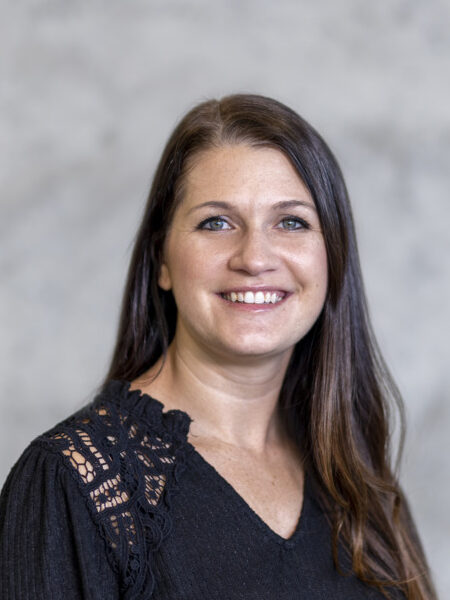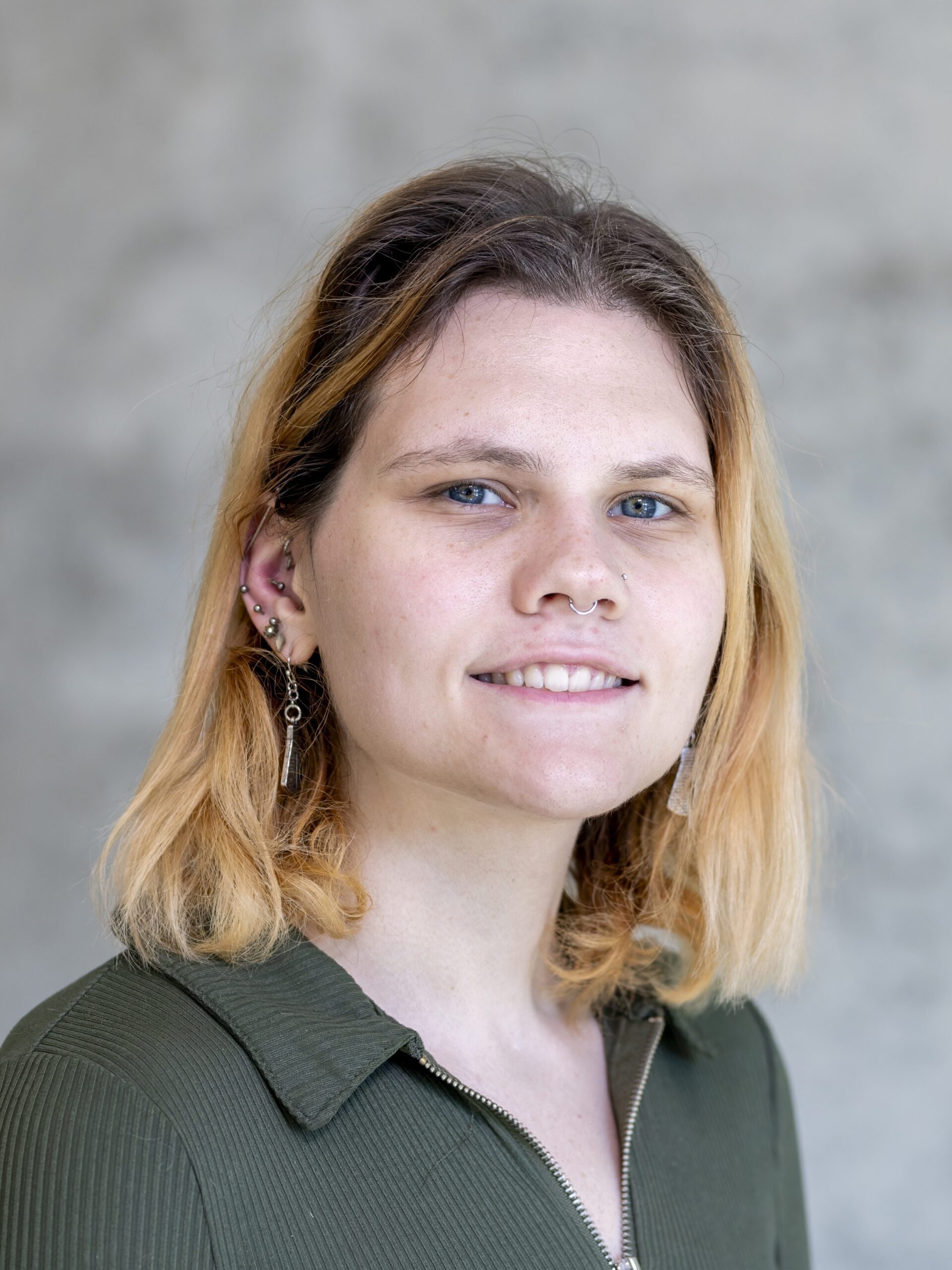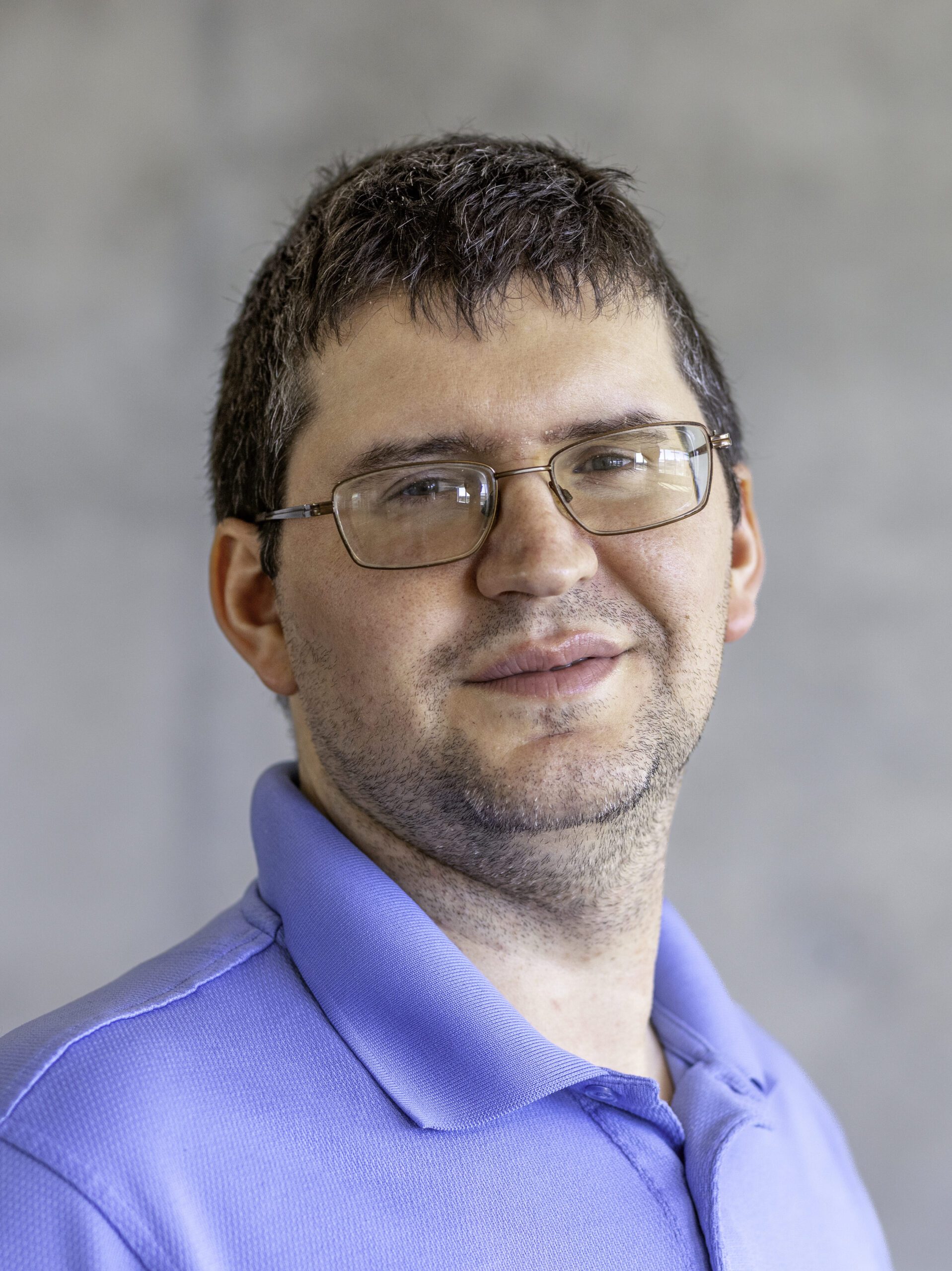Walton Laboratory
Cytoskeletal Structure in Health and Disease
The Walton Lab focuses on the intricate network of fibers within the cell called the cytoskeleton, which is critical for maintaining cell shape and directing intra-cellular transport of cargo. Mutations affecting the cytoskeleton and the motors that walk along it results in human disease.

News & Publications
Learn More
Van Andel Institute’s Dr. Travis Walton awarded prestigious Sloan Research Fellowship

Structural biologist and cellular ‘architecture’ expert Dr. Travis Walton joins Van Andel Institute
Walton T, Gui M, Velkova S, Fassad MR, Hirst RA, Haarman E, O’Callaghan C, Bottier M, Burgoyne T, Mitchinson HM, Brown A. 2023. Axonemal structures reveal mechanoregulatory and disease mechanisms. Nature 618:625–633.
Walton T, Wu H, Brown A. 2021. Structure of a microtubule-bound axonemal dynein. Nat Commun 12:477.
Walton T, Doran MH, Brown A. 2024. Structural determination and modeling of ciliary microtubules. Acta Crystallogr D Struct Biol 80(4):220–231.
Our Impact
We're raising thousands to save millions
We’re turning hope into action for the millions of people around the world affected by diseases like cancer and Parkinson’s. Find out how you can help us make a difference.
- 122 peer-reviewed papers published in 2024, 63 of which were in high-impact journals
- 15 VAI-SU2C Epigenetics Dream Team clinical trials launched to date
- 10 clinical trials co-funded by VAI & Cure Parkinson's (out of 41 total International Linked Clinical Trials Program trials)
Travis Walton, Ph.D.
Assistant Professor, Department of Structural Biology
Areas of Expertise
Structural biology, cryo-EM, cytoskeletal regulation
Biography
Dr. Travis Walton is a structural biologist whose research explores the molecular mechanisms of the cellular cytoskeleton in health and disease.
Dr. Walton earned his B.A.in chemistry and biochemistry/molecular biology from Lewis & Clark College and his Ph.D. in biological and biomedical sciences from Harvard Medical School in the lab of Dr. Jack W. Szostak. He then joined the lab of Dr. Alan Brown at Harvard Medical School as a postdoctoral fellow. While there, he leveraged cryo-EM to develop the first full atomic model of the axoneme, the cytoskeletal “backbone” of cilia and flagella. In 2020, Dr. Walton was awarded the prestigious Helen Hay Whitney Foundation Postdoctoral Fellowship in recognition of his research accomplishments.
In 2024, Dr. Walton joined Van Andel Institute’s Department of Structural Biology as an assistant professor. His lab harnesses native methodologies to extract protein complexes from cellular sources for structural and biochemical analyses.
For a full list of Dr. Walton’s publications, please visit PubMed.
2024
Walton T, Doran MH, Brown A. 2024. Structural determination and modeling of ciliary microtubules. Acta Crystallogr D Struct Biol 80(4):220–231.
2023
Walton T, Gui M, Velkova S, Fassad MR, Hirst RA, Haarman E, O’Callaghan C, Bottier M, Burgoyne T, Mitchinson HM, Brown A. 2023. Axonemal structures reveal mechanoregulatory and disease mechanisms. Nature 618:625–633.
2021
Walton T, Wu H, Brown A. 2021. Structure of a microtubule-bound axonemal dynein. Nat Commun 12:477.
Duzdevich D, Carr CE, Ding D, Zhang SJ, Walton T, Szostak JW. 2021. Competition between bridged dinucleotides and activated mononucleotides determines the error frequency of nonenzymatic RNA primer extension. Nucleic Acids Res 49(7):3681–3691.
2020
Walton T, DasGupta S, Duzdevich D, Oh SS, Szostak JW. 2020. In vitro selection of ribozyme ligases that use prebiotically plausible 2-aminoimidazole-activated substrates. Proc Natl Acad Sci U S A 17(11): 5741–5748.
2019
Walton T, Zhang W, Li L, Tam CP, Szostak JW. 2019. The mechanism of nonenzymatic template copying with imidazole-activated nucleotides. Angew Chem Int Ed Engl 58(32):10812–10819.
Walton T, Pazienza L, Szostak JW. 2019. Template-directed catalysis of a multistep reaction pathway for nonenzymatic RNA primer extension. Biochemistry 58(6):755–762.
2018
Zhang W, Walton T, Li L, Szostak JW. 2018. Crystallographic observation of nonenzymatic RNA primer extension. eLife 7:e36422.
Tam CP, Zhou L, Fahrenbach AC, Zhang W, Walton T, Szostak JW. 2018. Synthesis of a nonhydrolyzable nucleotide phosphoroimidazolide analogue that catalyzes nonenzymatic RNA primer extension. J Am Chem Soc 140(2):783–792
2017
Walton T, Szostak JW. 2017. A kinetic model of nonenzymatic RNA polymerization by cytidine-5′-phosphoro-2-aminoimidazolide. Biochemistry 56(43): 5739–5747.
Zhang W, Tam CP, Walton T, Fahrenbach AC, Birrane G, Szostak JW. 2017. Insight into the mechanism of nonenzymatic RNA primer extension from the structure of an RNA-GpppG complex. Proc Natl Acad Sci U S A 114(29):7659–7664.
2016
Walton T, Szostak JW. 2016. A highly reactive imidazolium-bridged dinucleotide intermediate in nonenzymatic RNA primer extension. J Am Chem Soc 138(36):11996–2002.
Burdick J, Walton T, Preston E, Zacharias A, Raj A, Murray JI. 2016. Overlapping cell population expression profiling and regulatory inference in C. elegans. BMC Genom 17:159.
2015
Zacharias AL, Walton T, Preston E, Murray JI. 2015. Quantitative differences in nuclear β-catenin and TCF pattern embryonic cells in C. elegans. PLoS Genet 11(10):e1005585.
Walton T, Preston E, Nair G, Zacharias AL, Raj A, Murray JI. 2015. The Bicoid class homeodomain factors ceh-36/OTX and unc-30/PITX cooperate in C. elegans embryonic progenitor cells to regulate robust development. PLoS Genet 11(3):e1005003.
2013
Nair G, Walton T, Murray JI, Raj A. 2013. Gene transcription is coordinated with, but not dependent on, cell divisions during C. elegans embryonic fate specification. Development 140(16):3385–3394.
Richards JL, Zacharias AL, Walton T, Burdick JT, Murray JI. 2013. A quantitative model of normal Caenorhabditis elegans embryogenesis and its disruption after stress. Dev Biol 374(1):12–23.

Nancy Duchaine
Senior Administrative Assistant I, Department of Structural Biology

Heather LeFaivre
Assistant Research Technician, Department of Structural Biology

Molly McGuire
Student Intern, Walton Laboratory

Brandon Russell
Research Technician, Department of Structural Biology

